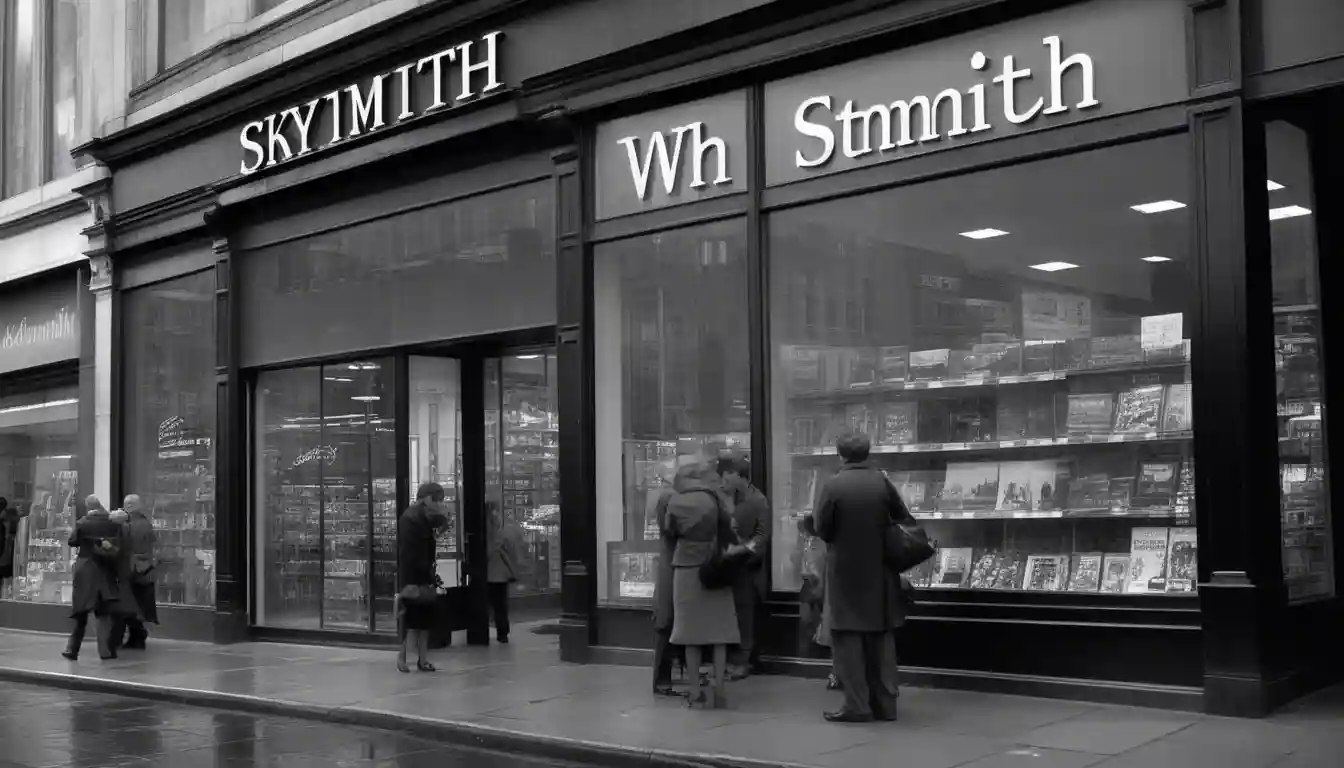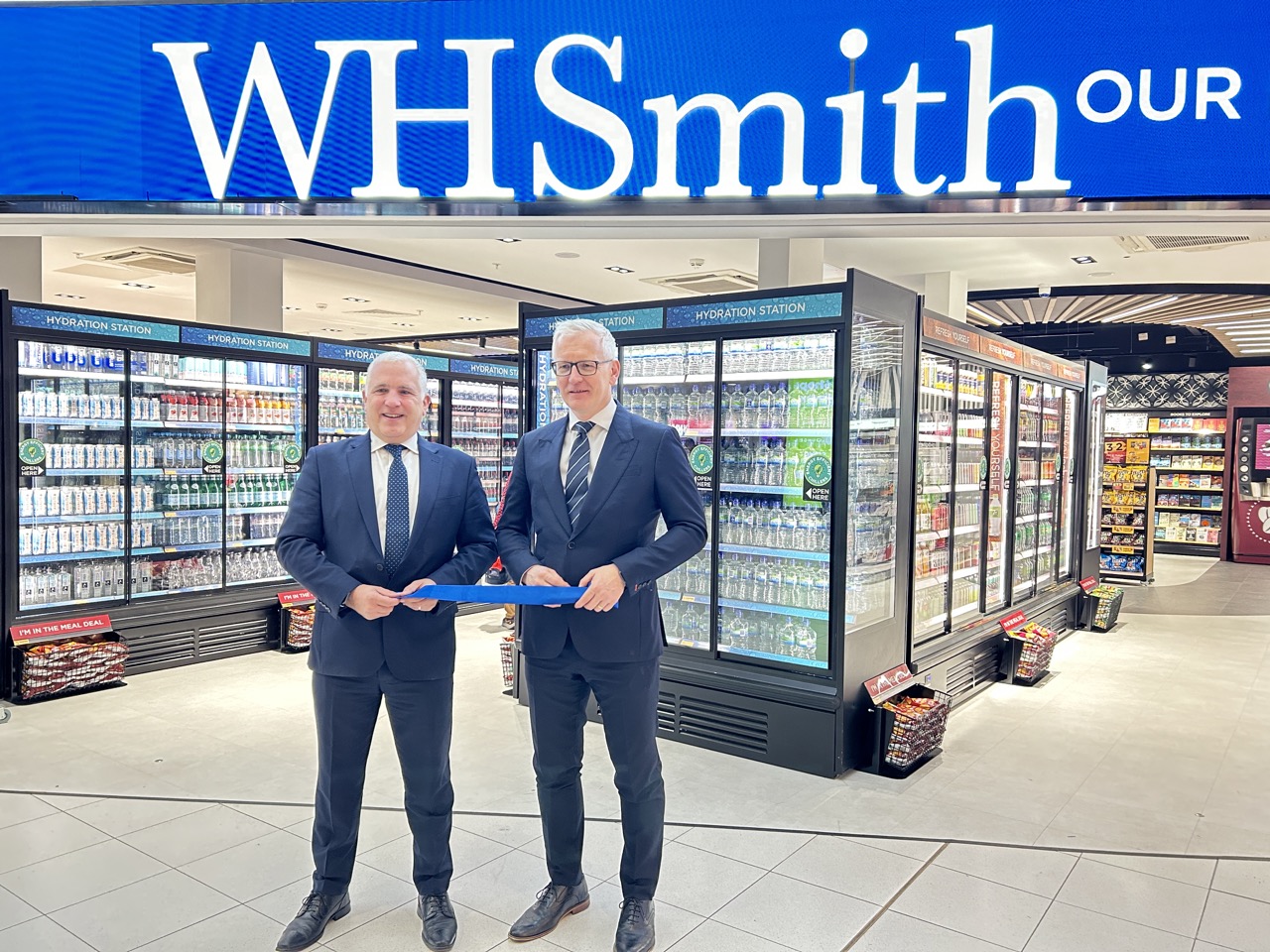
WH Smith Shares Plunge 42.57% After £30 Million Accounting Error Hits North American Profit Forecasts
WH Smith's Profit Mirage Crumbles, Exposing Cracks in Its High-Flying Travel Ambitions
LONDON — In the bustling terminals of airports worldwide, where weary travelers grab snacks and magazines on the fly, WH Smith has staked its future. But today, the company's shares plunged 42.57% (as of writing), marking the steepest single-day drop in its history, after it revealed a glaring accounting error that inflated North American profits by roughly £30 million. The mistake, rooted in prematurely logging supplier income before product sales materialized, has forced a drastic cut in forecasts and triggered an external audit, casting a shadow over the retailer's bold pivot away from Britain's fading high streets.

This debacle unfolds just months after WH Smith sold its UK High Street division to Modella Capital, rebranding those stores as TGJones and narrowing its focus to travel hubs like airports, railway stations, hospitals, and service stations. The move was meant to harness "captive audiences" for higher margins, with North America positioned as the growth powerhouse. Instead, the error has slashed expected North American trading profits from £55 million to about £25 million for the year ending August, dragging group pre-tax profits down to around £110 million from an implied £140 million baseline.
When Supplier Deals Turn Sour: Unpacking the Error's Mechanics
At the heart of the issue lies a fundamental lapse in accrual accounting under prudent practices like IFRS 15. WH Smith acknowledged booking supplier incentives—such as rebates, listing fees, and promotional supports—as deductions from cost of goods sold too early, without tying them to actual sell-through. This front-loading created an illusion of stronger earnings, particularly in the North American segment bolstered by acquisitions like Marshall Retail Group.
Did you know? Accrual accounting records revenue when it’s earned and expenses when they’re incurred—regardless of when cash changes hands—so financial statements reflect the real economics of a period rather than the timing of payments. By applying the revenue recognition and matching principles, it aligns sales with the costs that generated them, giving a clearer picture of profitability. This approach creates familiar items like accounts receivable (customers owe money), accrued expenses (the business owes money), prepaid expenses (paid early), and deferred revenue (cash collected before earning). Unlike cash accounting, which can skew results with late payments or prepayments, accrual accounting is required under major standards like GAAP/IFRS for most larger companies and is essential for businesses with inventory, subscriptions, or credit sales.
Analysts point to aggressive expansion pressures as a potential catalyst, noting that rapid integration of new operations and leadership transitions, including a relatively new CFO, may have strained internal controls. The company has enlisted Deloitte for an independent review, with findings due alongside full-year results, while PwC remains its statutory auditor. If discrepancies extend beyond North America, it could signal deeper systemic weaknesses, echoing vulnerabilities in revenue recognition that have plagued retailers under margin squeezes.
Voices from the Market: Shockwaves and Skepticism Ripple Through Stakeholders
The fallout has left shareholders reeling, with some experts describing the incident as a "huge embarrassment" that tarnishes the company's hoped-for fresh start. One investment analyst likened it to a "disaster," warning that the error in WH Smith's key growth region could unravel investor trust, prompting fears of hidden issues elsewhere. "Investors will be sobbing into their cornflakes," the analyst quipped, underscoring the emotional and financial toll.
Another market commentator emphasized the reputational hit: "Getting it so wrong is not a good look," they said, especially as the High Street sale hinged on North American potential amid fierce competition from giants like Walmart. A retail specialist added that modern chains increasingly rely on supplier partnerships for in-store visibility and media services, but "just buying and selling isn't enough anymore," highlighting how such income streams, while lucrative, demand meticulous timing to avoid pitfalls.
From the company's vantage, the transparency in disclosing the error and commissioning Deloitte signals accountability, potentially mitigating long-term damage. Yet, affected parties, including institutional investors, express concern over rising debt levels—headline pre-IFRS 16 net debt approaching £425 million—and the possibility of supplier clawbacks eroding cash flows.
Echoes of Past Scandals: Lessons from Tesco and Beyond
This isn't uncharted territory. The error mirrors Tesco's 2014 overstatement of £326 million through early supplier payments, which sparked regulatory probes and fines. Similarly, Macy's recent $151 million expense concealment by a rogue employee delayed reports and tanked shares 11%, while Steinhoff's broader fraud cratered its value by 96%. These cases, spanning retail and global industries, reveal a persistent risk in conditional income under competitive pressures, where blurring lines between revenue and cost offsets invites manipulation.

For WH Smith, the implications are stark: potential regulatory scrutiny from bodies like the FRC, elevated capital costs as investors demand premiums, and a windfall for short sellers like Citadel and GLG, who pocketed over £3 million each. Strategically, it hampers North American expansion, the linchpin of post-High Street growth, and could pressure concession renewals at airports if landlords perceive governance risks.
Navigating the Turbulence: Broader Ripples and Strategic Crossroads
The plunge has shaved WH Smith's market cap to roughly £0.85 billion, implying a P/E ratio of 10-11x on the revised £110 million pre-tax profit—modest compared to travel retail peers, but compressed by the "trust tax" until controls prove robust. Cash impacts remain a wildcard; if the error is purely timing-based, effects may be contained, but receivable write-downs or clawbacks could strain liquidity further.
(Summary of WH Smith market capitalization over the past year and the impact of the Aug 21, 2025 accounting error announcement)
| Period / Event | Date | Market capitalization (approx.) | Notes |
|---|---|---|---|
| Late 2024 level | Oct 2024 | €2.16B | Snapshot level from market-cap aggregator for late 2024. |
| Pre-announcement snapshot | Aug 2025 (pre-21 Aug) | $1.84B (≈£1.45B) | Snapshot level shortly before the announcement. |
| Accounting error disclosed; profit cut; review initiated | 21 Aug 2025 | — (event trigger) | Company announced ~£30m accounting error in North America; profit guidance cut; independent review initiated. |
| Intraday market cap after share plunge | 21 Aug 2025 | ≈£830m–£900m | Shares dropped roughly 35–42% intraday following the announcement. |
| One-day value erased | 21 Aug 2025 | ≈£490m–£500m | Rough change in market value during the session. |
Broader analysis suggests this reflects retail's evolving model, where supplier-funded media networks boost margins but amplify accounting complexity. For WH Smith, now exclusively a travel retailer, the high-margin captive environments offer resilience, yet the error exposes vulnerabilities in a sector squeezed by e-commerce and economic shifts.
Charting a Path Forward: Rebuilding Amid Uncertainty
As WH Smith confronts this setback, recovery hinges on Deloitte's findings confirming the issue as isolated. Tighter controls on supplier accruals, a possible leadership refresh, and moderated North American ambitions could stabilize the ship. Volatility looms, with shares potentially lingering in the 540-750p range unless a clean audit restores confidence.
From an investment lens, informed by current market dynamics and historical patterns like post-scandal rebounds in retail, the setup could offer value for patient capital. Analysts suggest shares may stabilize around 10-11x multiples if cash fallout is limited, potentially re-rating to 12-13x on normalized earnings above £120 million in FY26, implying upside to 800-900p in optimistic scenarios. Conversely, broader issues could compress to 8-9x, targeting 540-620p. Such projections assume contained remediation and steady passenger trends in travel retail, but past performance does not guarantee future results. Investors should consult financial advisors for tailored advice, weighing personal risk tolerance against the ongoing review's outcomes.
(How the P/E ratio is used to value a stock, including definition, calculation, use cases, and limitations.)
| Aspect | Key Points |
|---|---|
| Definition | P/E compares a stock’s price to its earnings per share (EPS), indicating how much investors pay for $1 of earnings. |
| Formula | P/E = Share Price ÷ EPS. |
| Interpretation | Higher P/E often reflects higher expected growth or lower perceived risk; lower P/E can signal lower growth, higher risk, or potential undervaluation. |
| Trailing vs. Forward | Trailing P/E uses the last 12 months’ actual EPS; forward P/E uses next-12-months projected EPS (more forward-looking but forecast-dependent). |
| Core Valuation Use | Select an appropriate multiple (peer, historical, or justified) and multiply by EPS to estimate fair value: Target Price = Target P/E × EPS. |
| Peer Comparison | Compare a company’s P/E to industry peers to assess relative expensiveness/cheapness given similar business models and risk. |
| Historical Comparison | Compare current P/E to the company’s own historical range to gauge sentiment shifts (multiple expansion/contraction). |
| Multiple Expansion/Contraction | Price can change from sentiment-driven multiple shifts even if earnings stay flat (expansion boosts price; contraction reduces it). |
| Market-Level Use | Applied to indices (e.g., S&P 500) to judge overall market valuation; can use cyclically adjusted measures for cycle smoothing. |
| Practical Steps | 1) Choose earnings basis (trailing/forward/normalized). 2) Select fair multiple (peers/history/premium-discount). 3) Compute value (EPS × P/E). 4) Cross-check with other metrics (PEG, EV/EBITDA, FCF yield). |
| Strengths | Simple, widely used, fast for relative checks and sanity checks on valuation levels. |
| Limitations | Not meaningful with negative/minimal earnings; can be distorted by one-offs, accounting, leverage, or cyclicality; forward P/E depends on forecast accuracy; high growth can justify high P/E. |
| Quick Example | If EPS=$5 and fair multiple=20x, implied price=$100. If the multiple later expands to 22x, price ≈$110; if it contracts to 16x, price ≈$80. |
In the end, WH Smith's blunder serves as a cautionary tale in retail's high-stakes transformation, where precision in the back office is as critical as prime shelf space in the terminal.